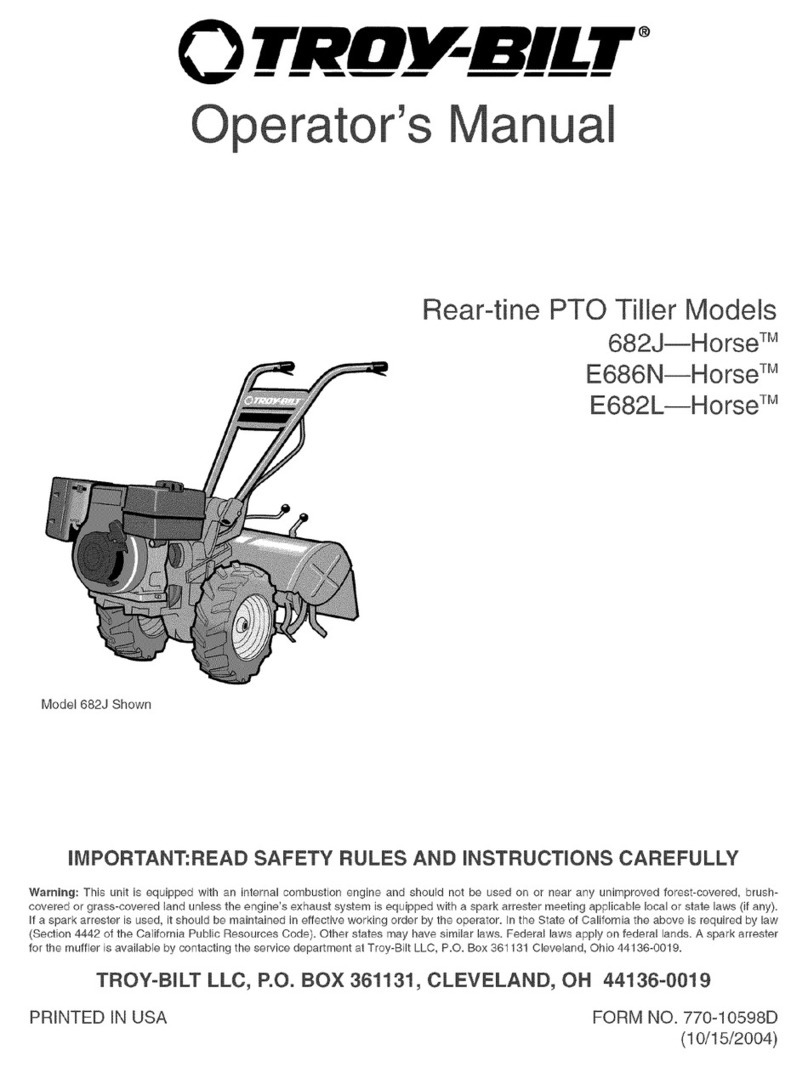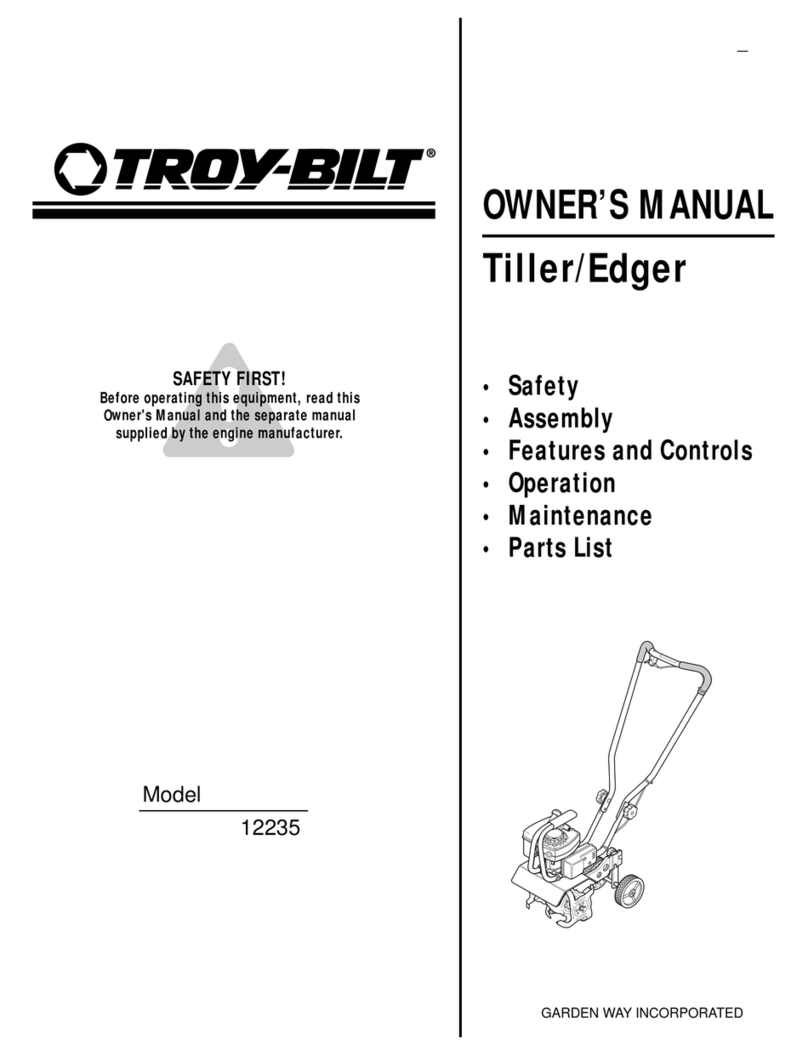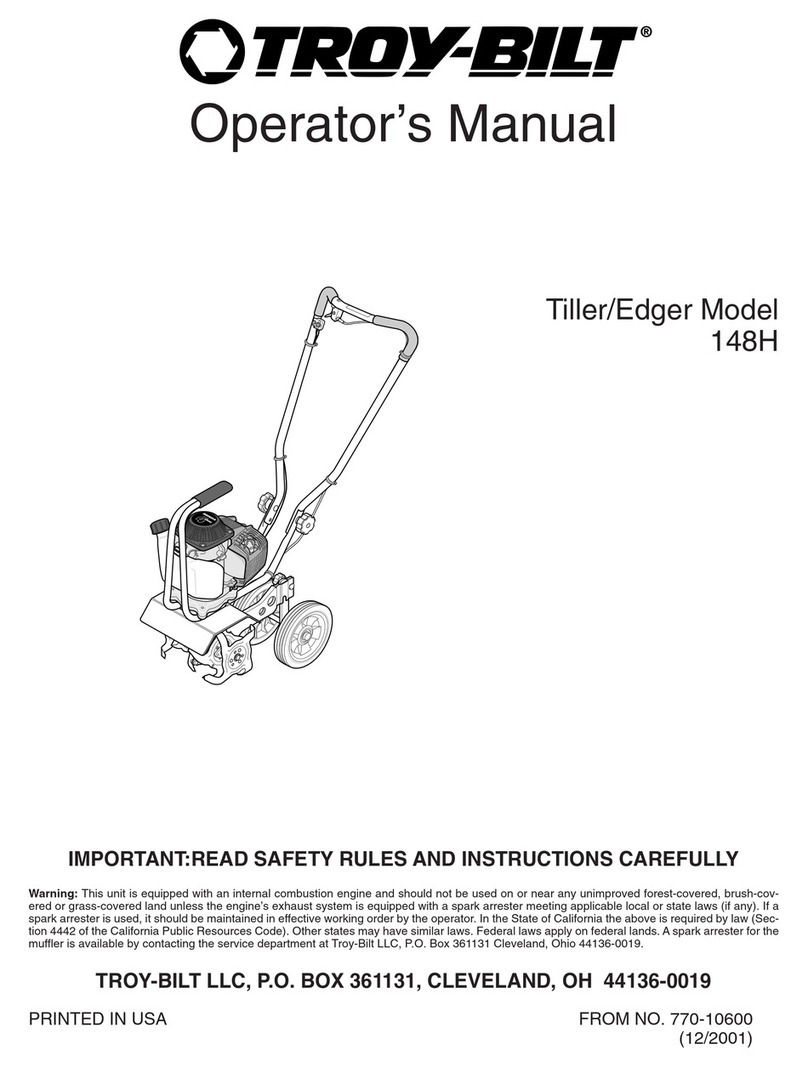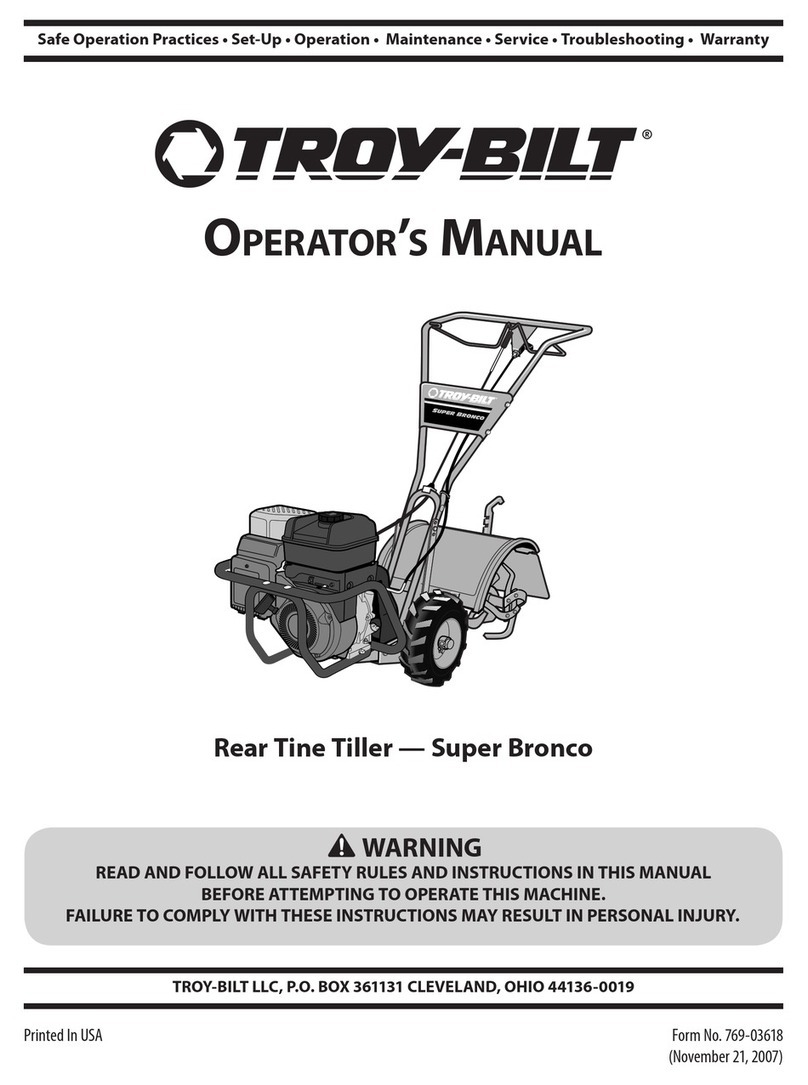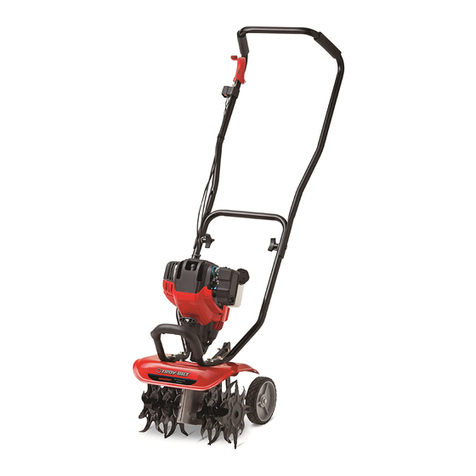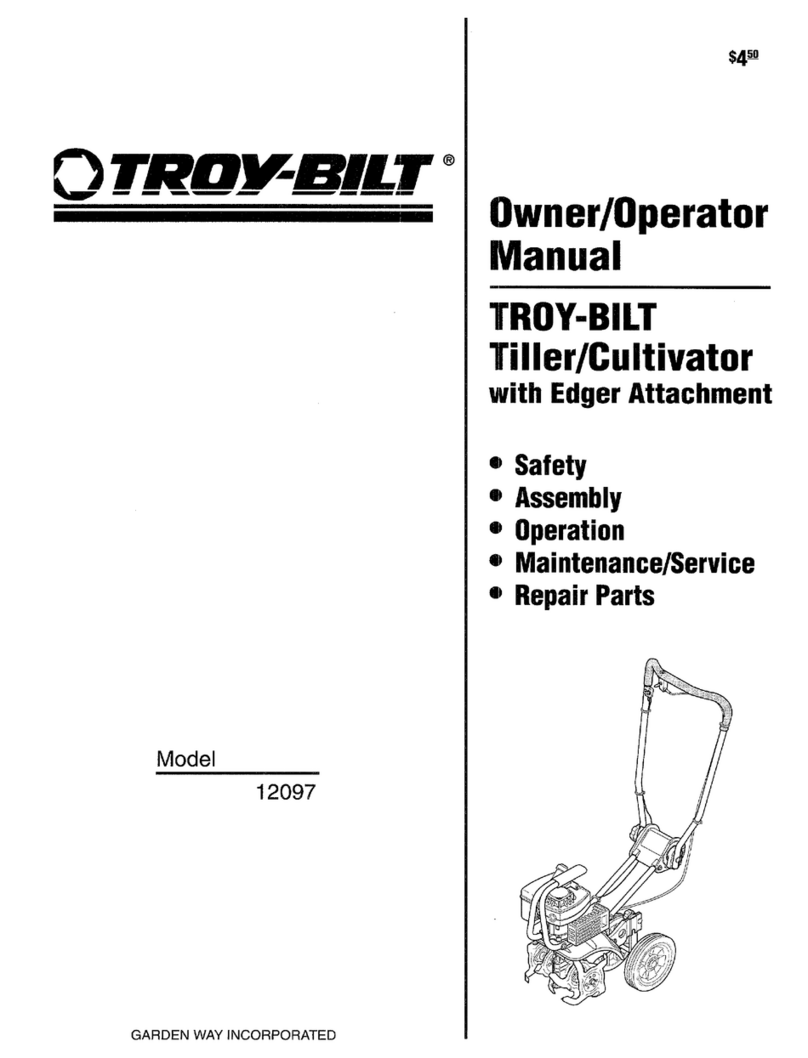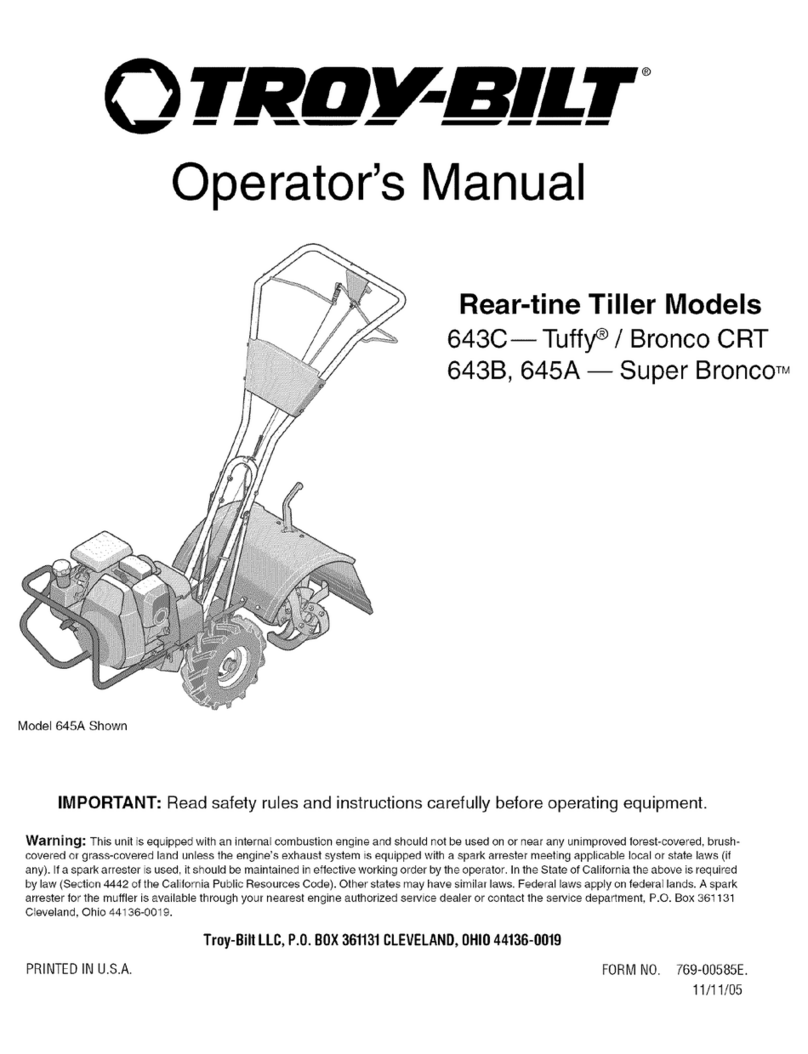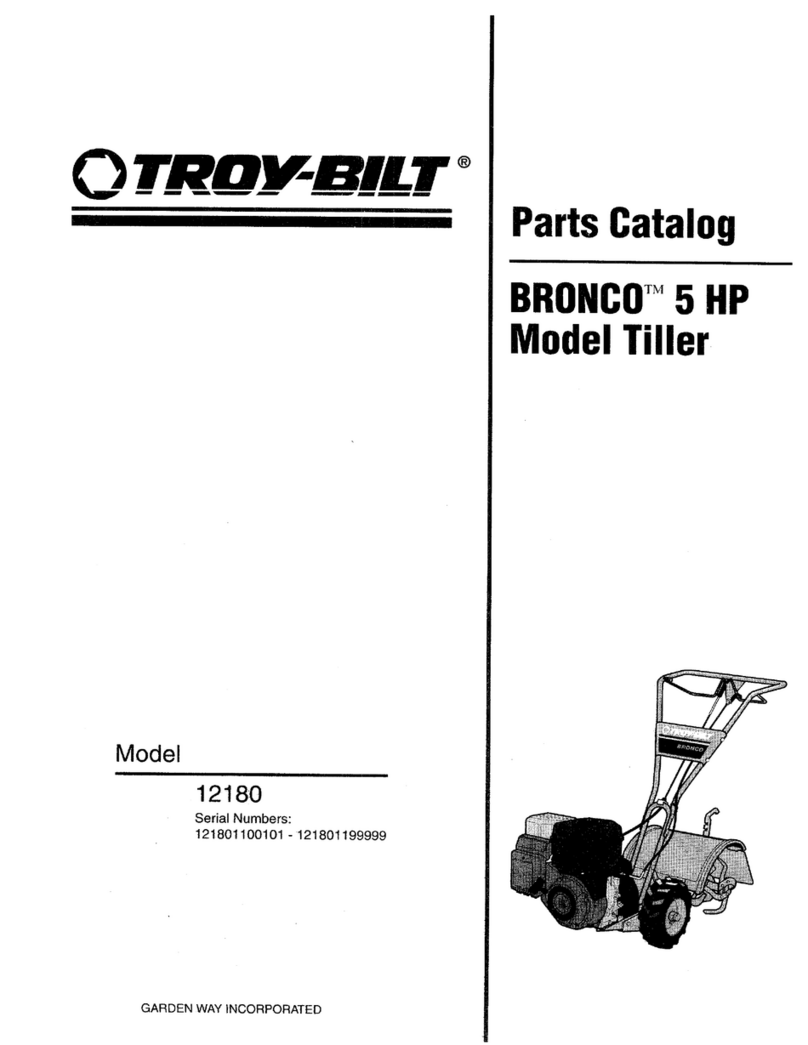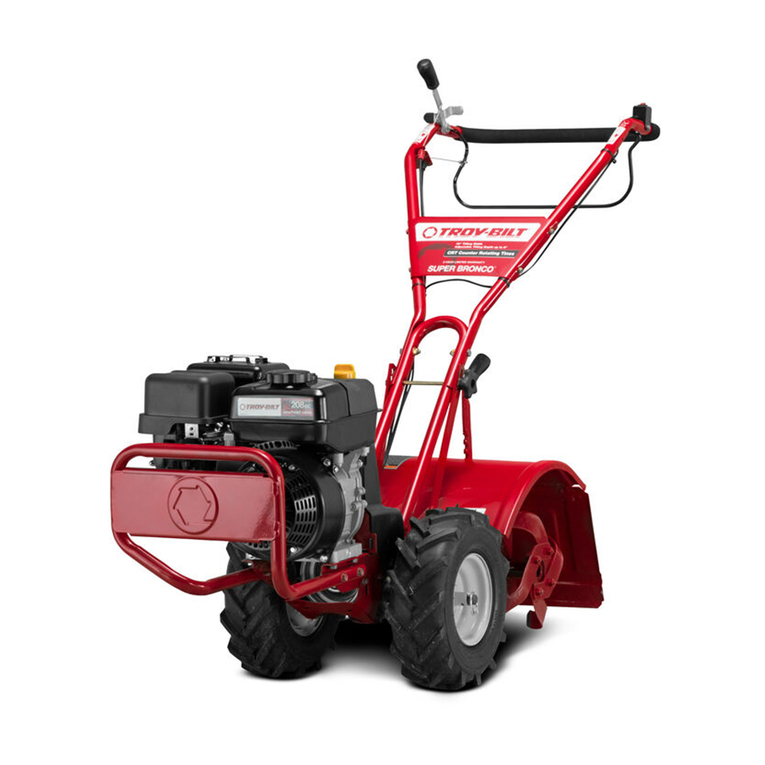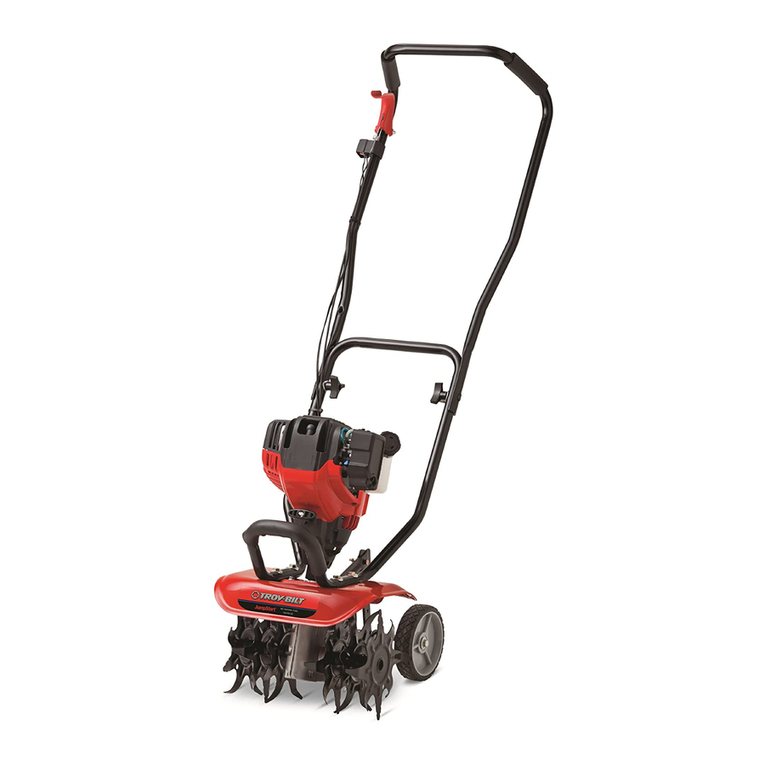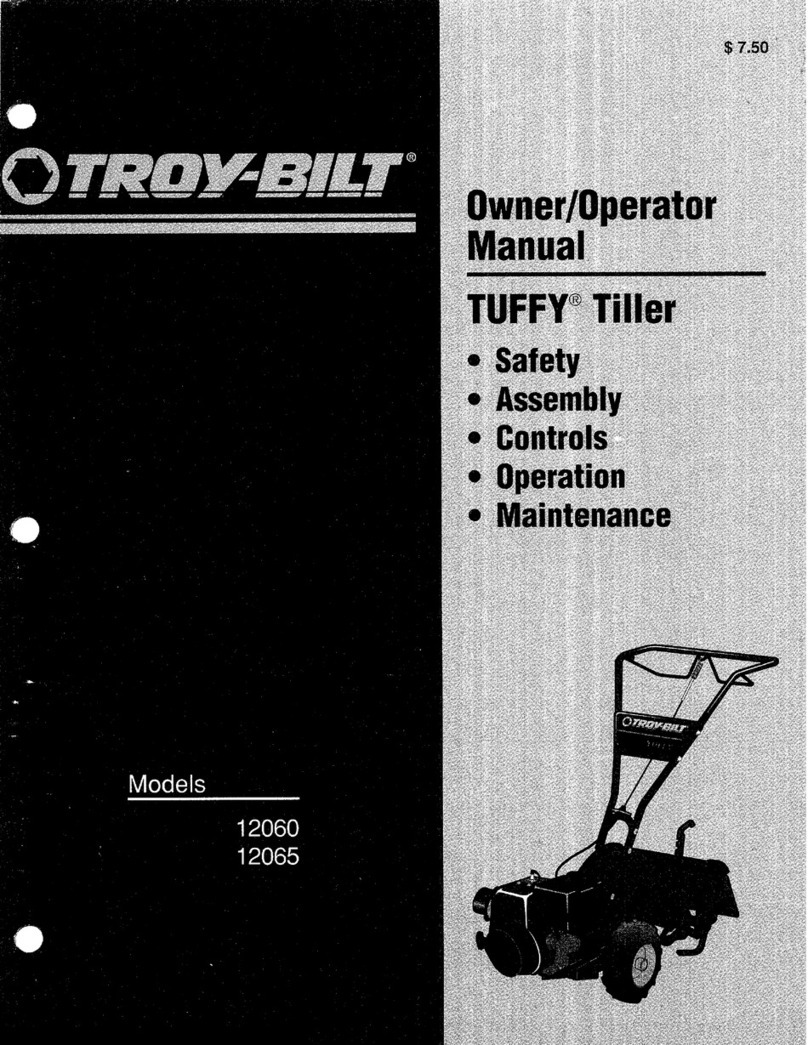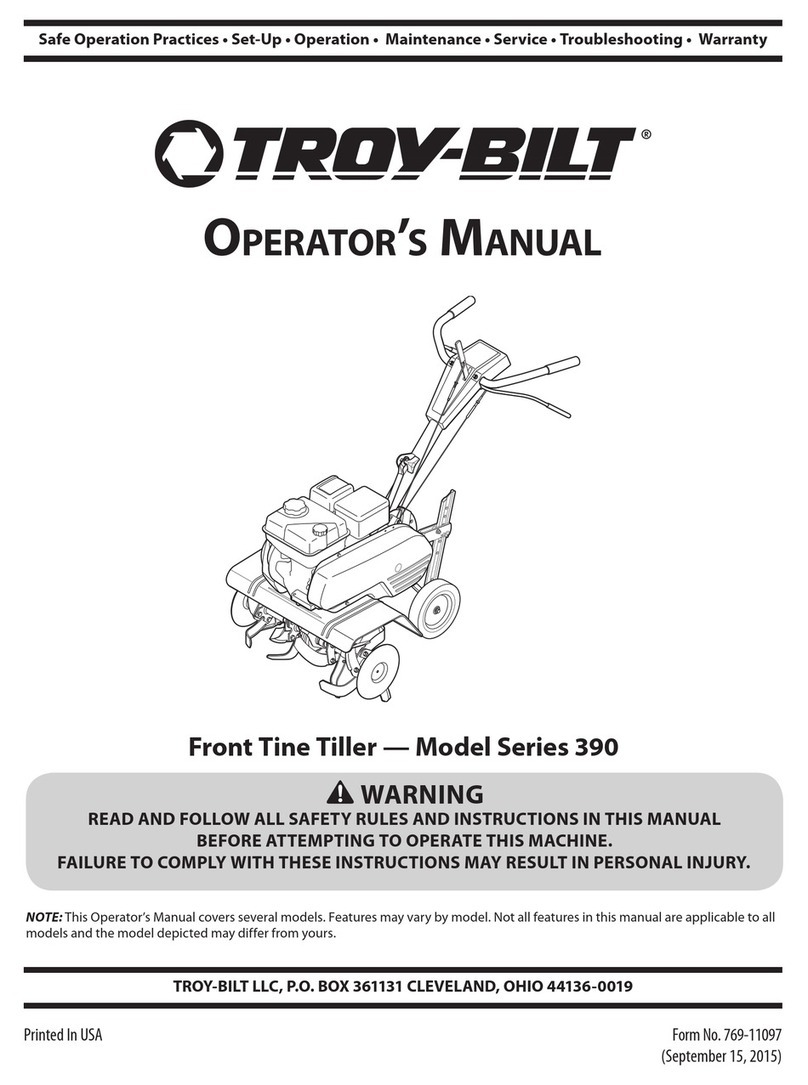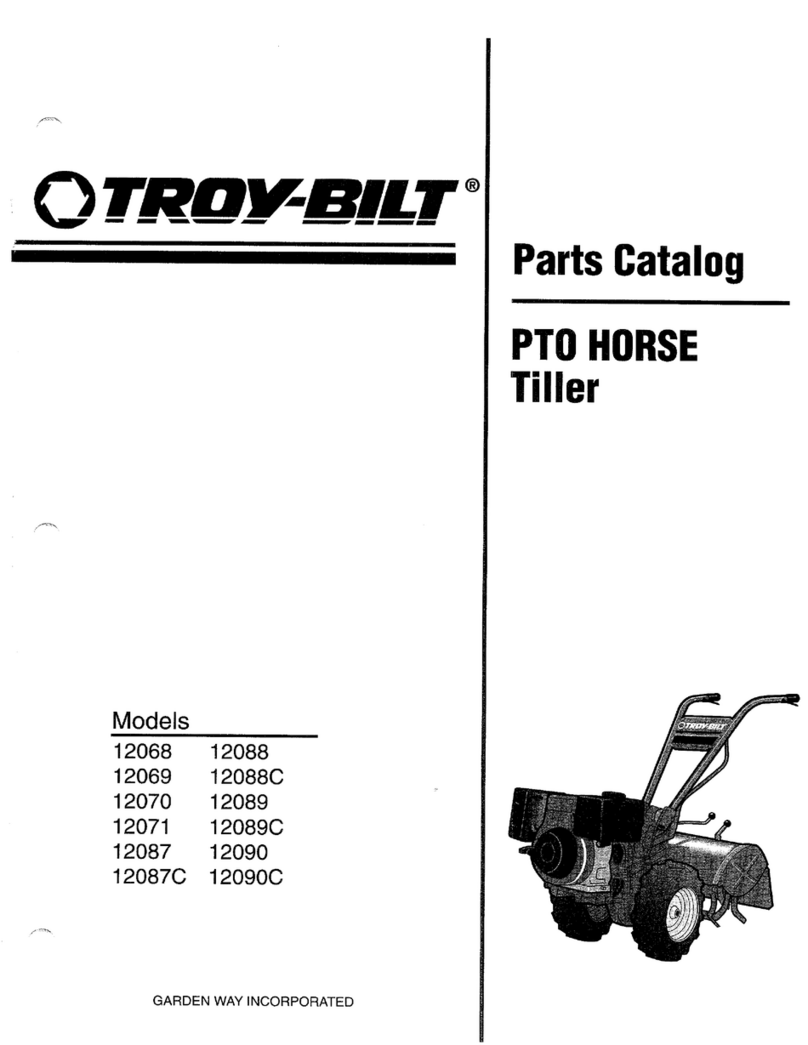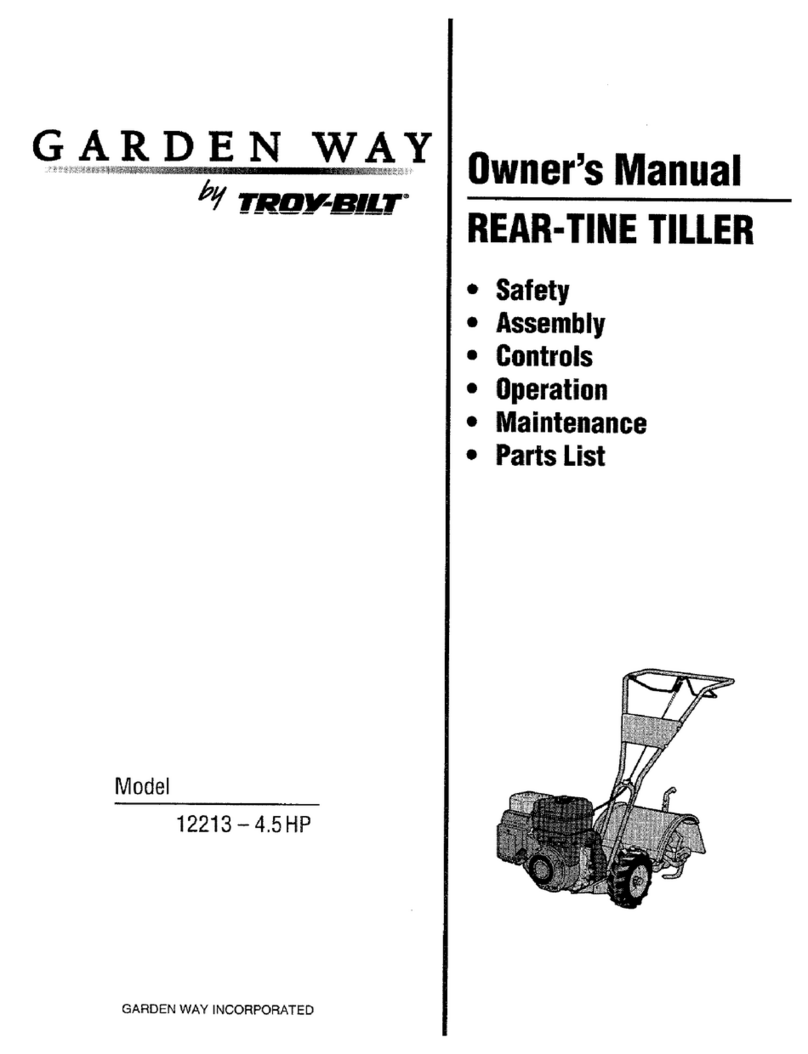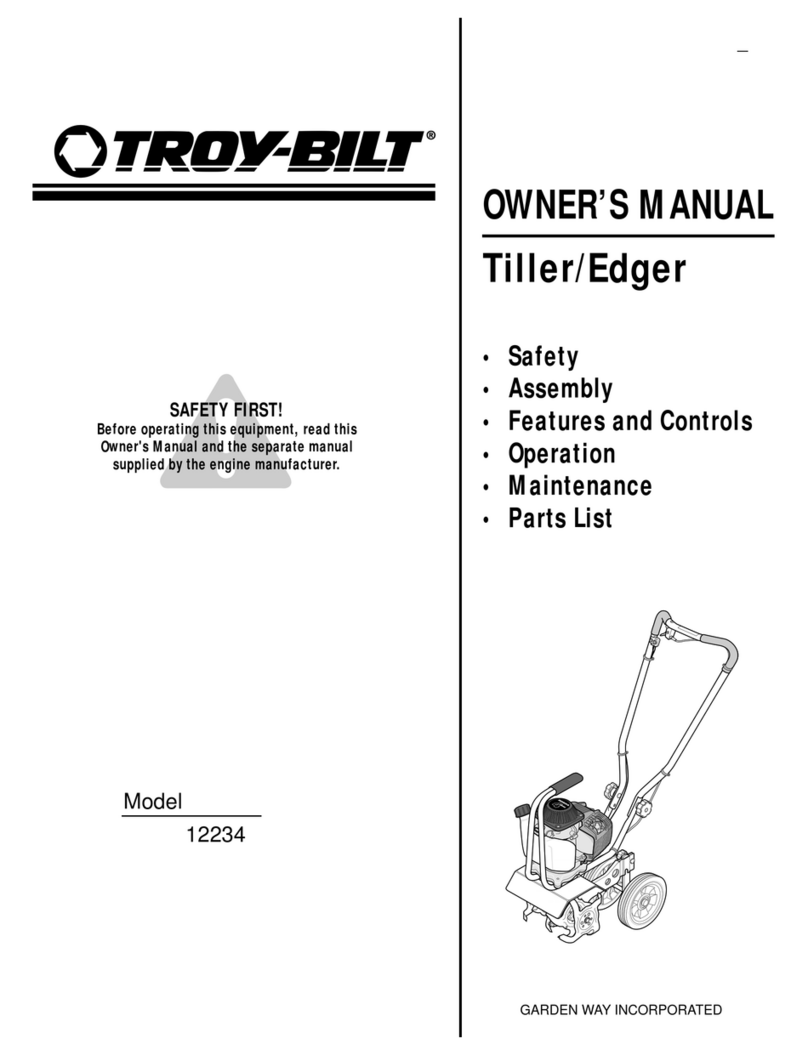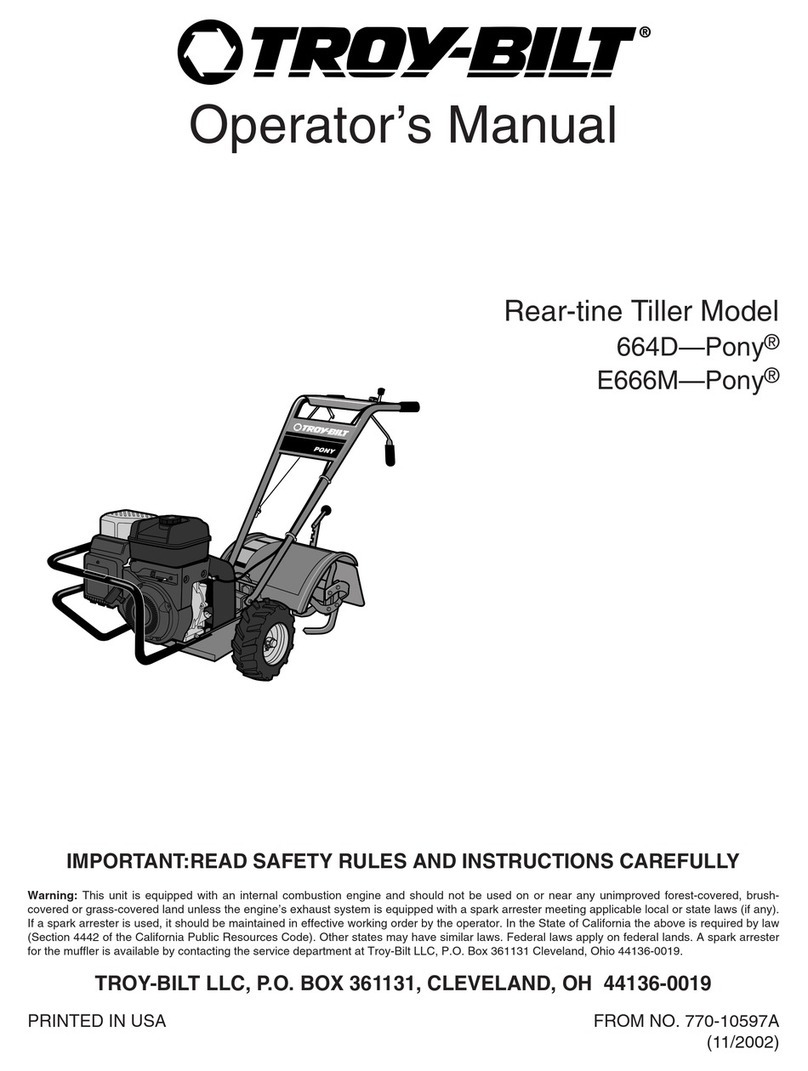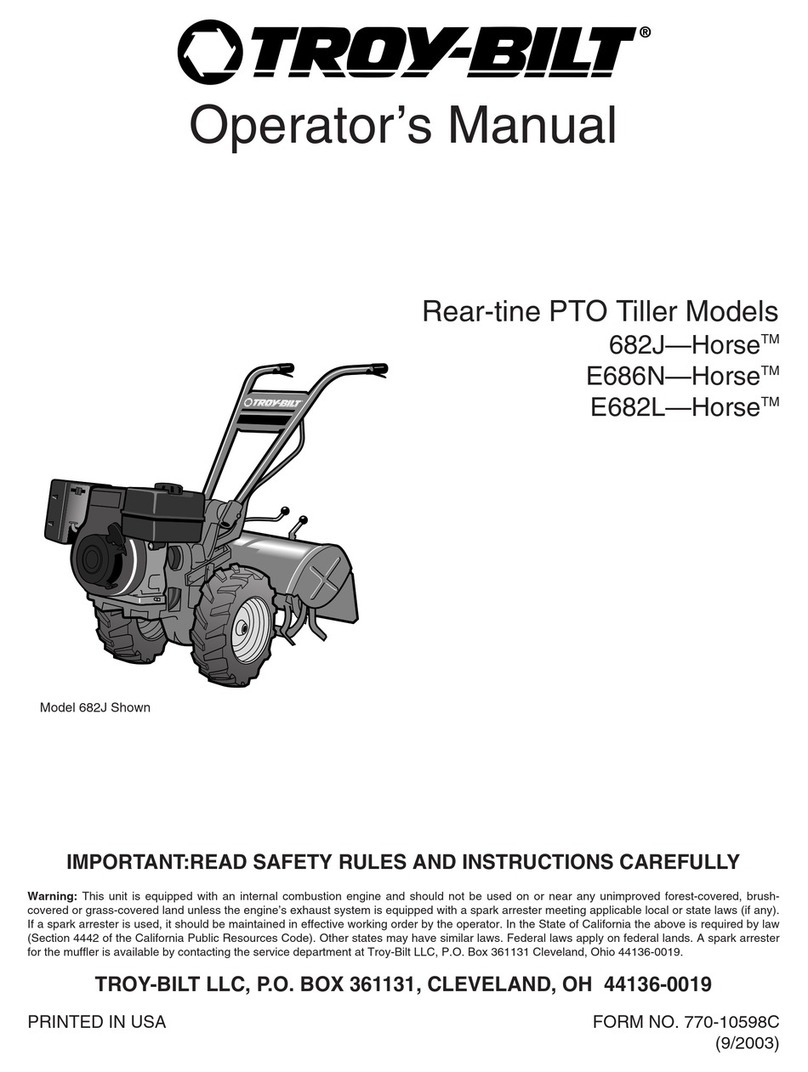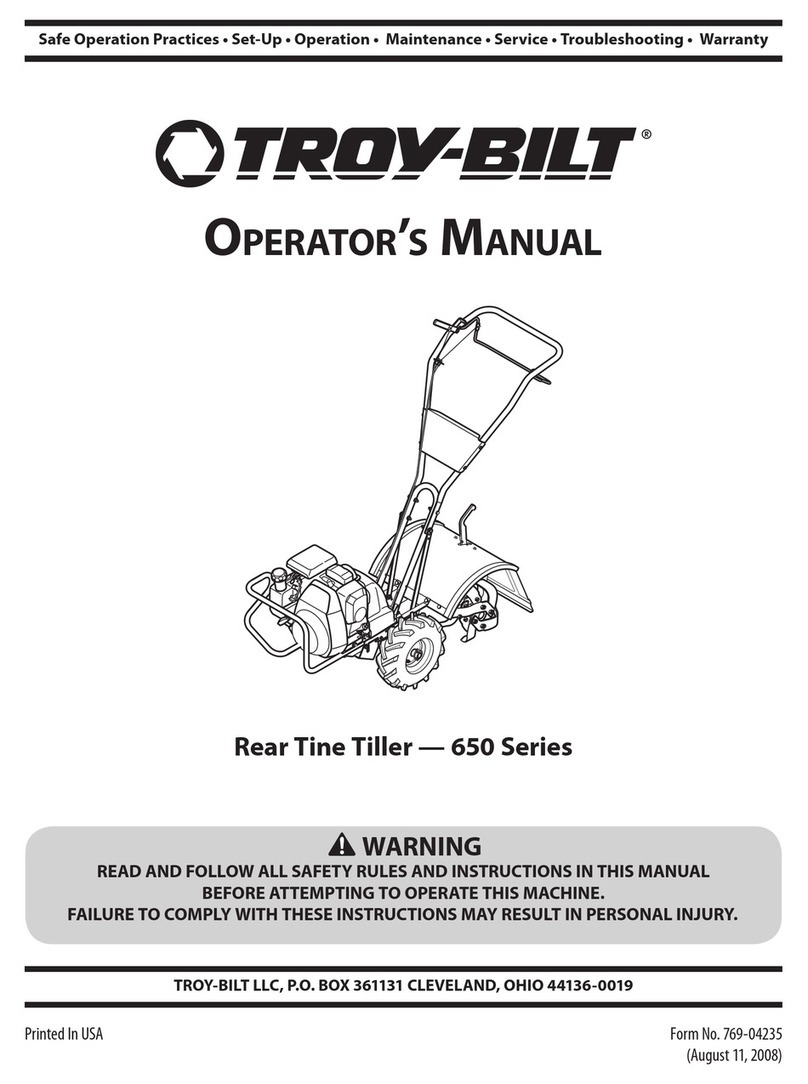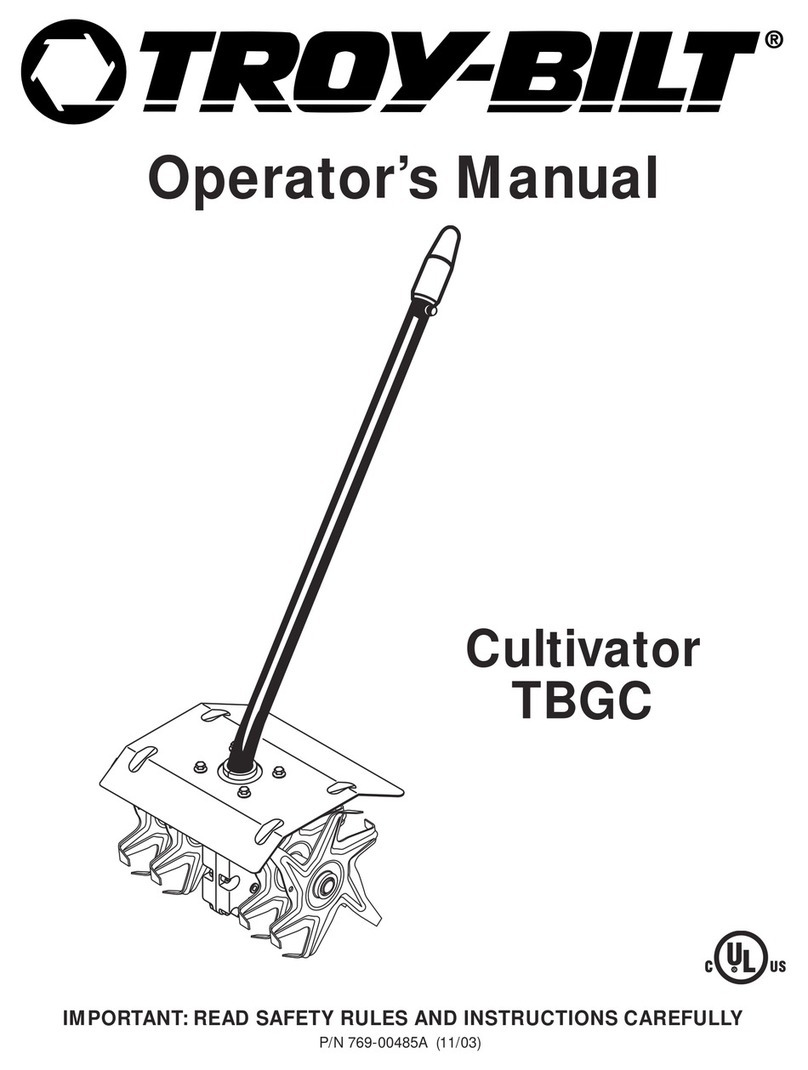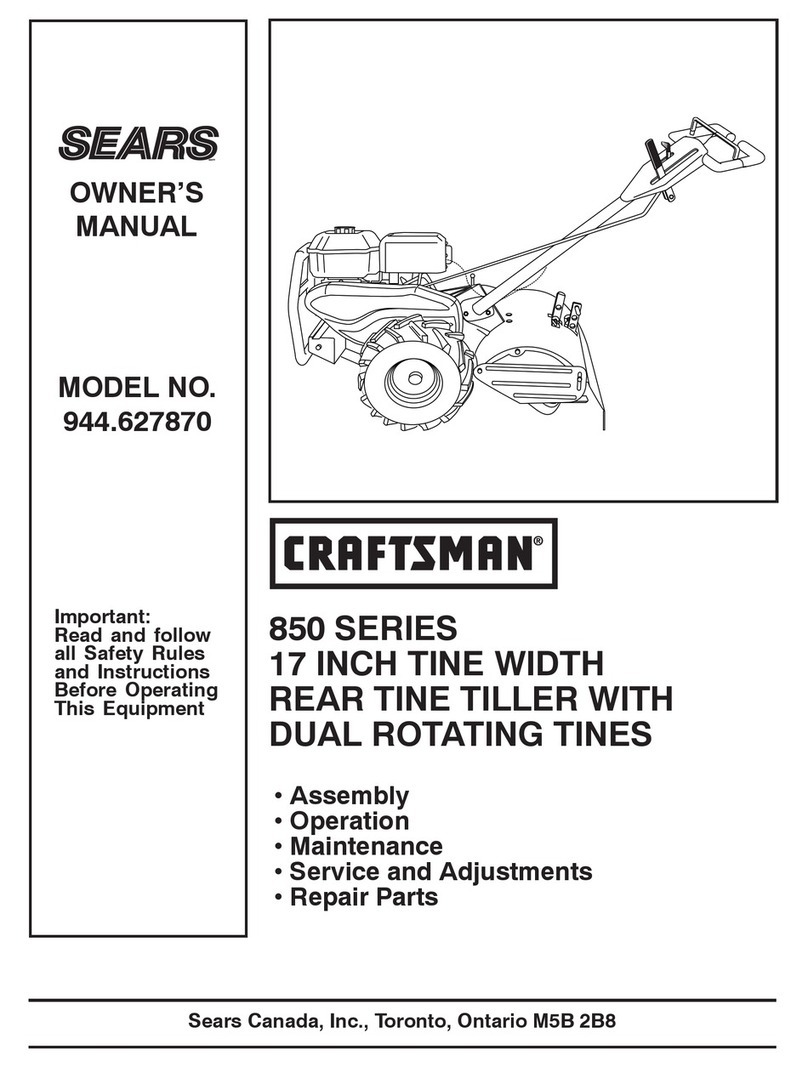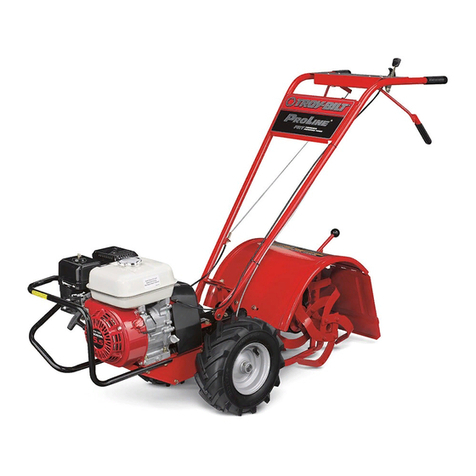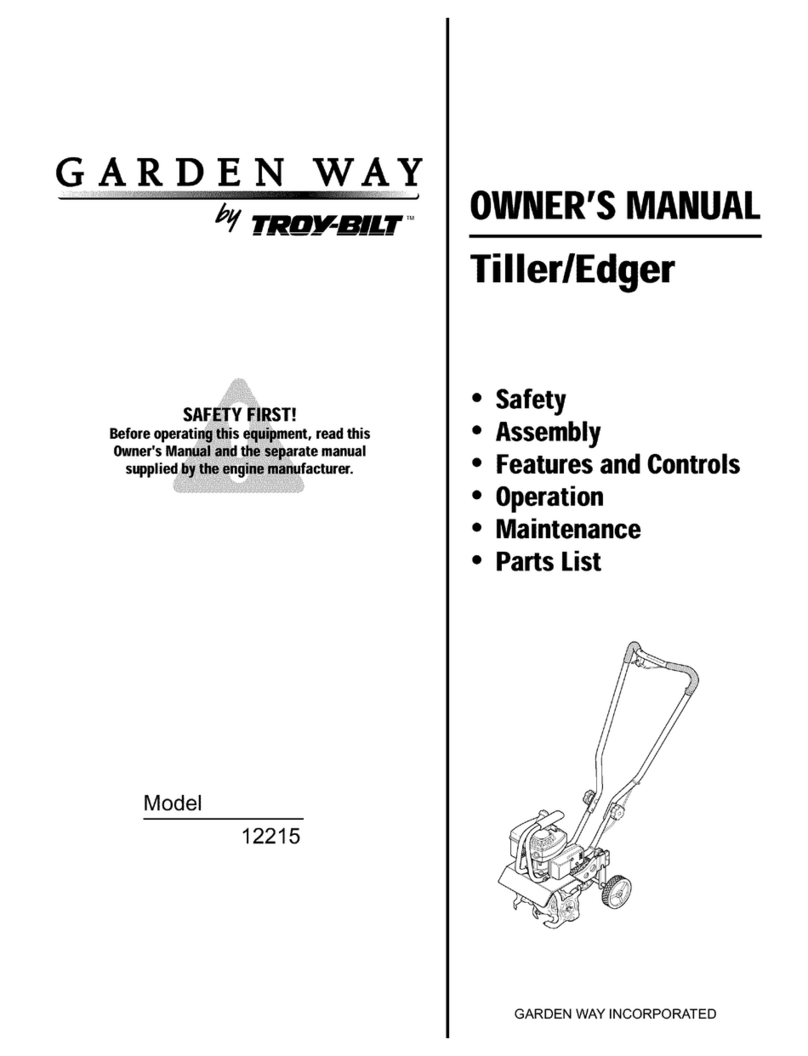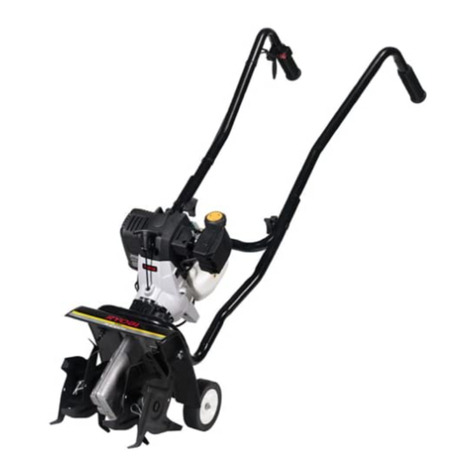SECTION
1:
General
Information
PTO
HORSE
MODEl
TECHNICAL
MANUAL
Page
1-1
4/90
•This manual provides transmis-
sion service information
for
the
PTO HORSE Model TROY-BILT®
Roto Tiller-Power Composter built
by TROY-BILT Manufacturing
Company, Troy, New York. Use
this manual
for
tillers with serial
numbers 640000 and up.
•This manual was written
for
and
intended to be used by profes-
sional service technicians
who
have been trained in the proper
servicing
of
outdoor
power
equipment.
•All information, illustrations, and
specifications contained in this
manual are based on the latest
information available at the time
of
publication. The right
is
reserved
to make changes at any time
without notice. If you have any
questions concerning the informa-
tion contained in this manual
please contact:
Technical Service Department
TROY-BILT® Manufacturing
Company
102nd Street and 9th Avenue
Troy, New York
12180
Call Toll-Free: 1-800-833-6990.
This symbol
is
used to alert you to
important safety messages in this
manual and on decals affixed to
the tiller. When you see this sym-
bol, carefully read and follow its
safety message. Failure to
do
so
could result in personal injury
or
property damage.
•This manual is divided into
seven sections
as
shown in the
Table
of
Contents. For best
results, read each section in its
entirety before attempting any
repair work.
•This manual
is
designed to be
used in combination with the PTO
Horse Model Owner/Operator
Manual. The Owner/Operator
Manual contains additional service
and
maintenance information that
is
not
covered in this manual.
Refer to
"Quick
Reference Repair
Index"
in
this section
for
alisting
of
the service and maintenance
topics that are covered in the
Owner/Operator Manual.
•Service and maintenance infor-
mation regarding engines is
not
covered in this manual. Such
information can be obtained by
consulting the Service Repair
Manuals available from the engine
manufacturer. You should,
how-
ever, call
our
Technical Service
Department with questions
con-
cerning engine replacement
or
interchangeability.
•
Throughout
this manual, you
will
see
references to the left and
right sides
of
the tiller. This refers
to the left and right sides
of
the
tiller
as
you would see them stand-
ing in the operator's position.
Safety First
When working on the tiller
or
its
engine, closely follow operating
instructions and recommended
safety practices at all times.
Failure to
do
so could result in
personal injury
or
property dam-
age. Here are some basic safety
precautions you should keep in
mind at all times when doing
repair work:
KNOW THE TILLER AND
ENGINE! Read the
Owner/Operator Manual carefully.
Be sure you know what each tiller
and engine control does before
you attempt to operate it.
Read and follow all safety rules.
Never allow inexperienced per-
sons
or
children to operate the
tiller
or
its engine.
WEAR PROPER APPAREL!
Don't wear loose clothing
or
jewelry that could get caught in
moving parts
of
the tiller
or
its
engine.
AVOID MOVING PARTS!
Keep hands, feet, hair, clothing,
and tools safely away from moving
parts when the engine
is
running.
AVOID ACCIDENTAL STARTING!
When servicing the machine, pre-
vent unintentional starting
of
the
engine by disconnecting the spark
plug wire and keeping the wire
away from the spark plug. Place
engine controls in the OFF posi-
tion and shift the Wheels/
Tines/PTO Drive Lever into
NEUTRAL.
WEAR
EYE
PROTECTION!
Safety goggles
or
afac shield
should be worn wh ver there is
the possibility
of
danger to the
eyes from flying parts
or
particles.
PREVENT FIRES AND
EXPLOSIONS! Gasoline
is
highly
flammable and explosive
and should be used and stored
with extreme caution. Keep gaso-
line away from open flame, sparks,
and
do
not smoke in the vicinity
of
gasoline cans
or
fuel tanks.
Do
not
add gasoline to afuel tank when
the engine is running
or
still hot.
Fill the fuel tank outdoors, in a
well-ventilated area. Store gaso-
line in acool, well-ventilated
place, safely away from any spark
or
flame producing equipment.
Store
only
in aU.L. approved
con-
tainer and safely
out
of
reach
of
children. Wipe
off
any spilled gas-
oline and move the engine away
from gasoline fumes before start-
ing engine.
Use flammable cleaning solvents
only
according to recognized
safety practices (never use gaso-
line
as
acleaning solvent).
Oily
rags and waste should be packed
